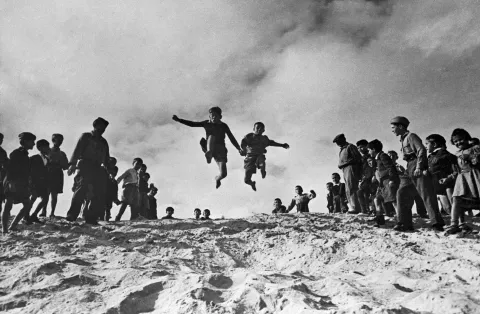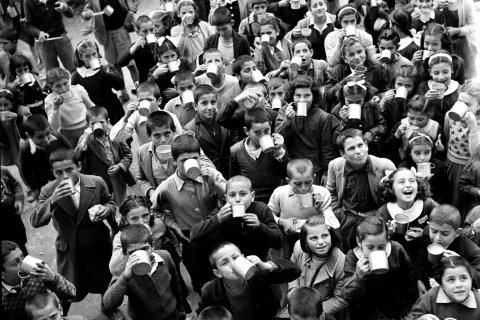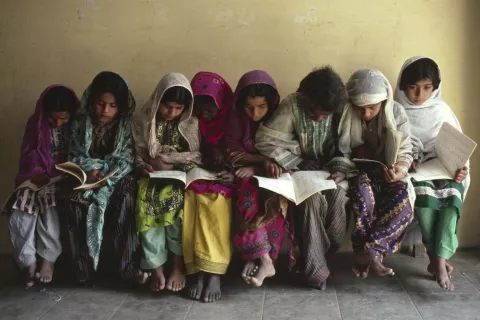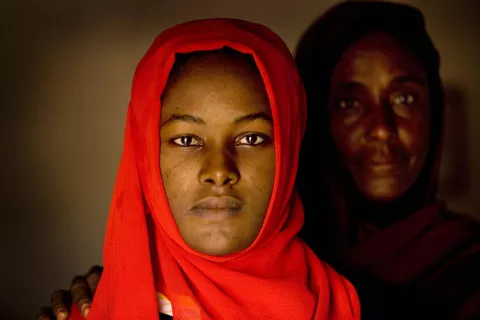Bringing the world together: 1989–2005
Find out how UNICEF brought nations together under the banner of children’s rights.

Find out how UNICEF brought nations together under the banner of children’s rights.
1989
159 United Nations Member States adopt the Convention on the Rights of the Child, the most universally approved human rights treaty for the protection of children.

“The best interests of children must be the primary concern in
making decisions that may affect them.”
1990
The World Summit for Children, convened by UNICEF, brought together an unprecedented number of heads of state to rally around the cause of children and adopt the Declaration on the Survival, Protection and Development of Children.

1993
By the end of 1993, life expectancy in the developing world has increased by about a third since the end of World War II. Infant and child death rates have been halved, the proportion of children starting school has risen from 50 per cent to 75 per cent, and the number of rural families with access to safe drinking water has risen from just 10 per cent to almost 60 per cent.

1994
UNICEF and UNESCO invent and distribute School-in-a-Box, a global effort to support uninterrupted education for children in humanitarian crises.

1995
At the Fourth World Conference on Women, held in Beijing, China, world leaders renew their commitment to the rights of women and girls.

1995 to 2005

“When the lives and rights of children are at stake, there must be no silent witnesses.”
1996
The Graça Machel report, Impact of Armed Conflict on Children, describes the devastating effects of war on children and advocates for their special protection.
1998
UNICEF adopts a human rights-based approach to programming, placing human rights principles at the centre of its work.

1999
UNICEF, the World Health Organization (WHO) and the United Nations Office for the Coordination of Humanitarian Affairs (OCHA) intervene to deliver vaccines and other urgent health services for children in conflict.

2002
A special session of the United Nations General Assembly – the first dedicated exclusively to children – reviews progress on the goals set by the 1990 World Summit for Children.

2004
UNICEF and partners organize a rapid humanitarian response to a devastating tsunami in the Indian Ocean.

2005 to 2010
UNICEF launches the “Unite for Children, Unite against AIDS” campaign to mobilize resources and accelerate action for children vulnerable to HIV and AIDS.

Building results-based programming and partnerships to unite for children.

As the world realized the scale of challenges children face, and agreed to work toward a unified solution, UNICEF began to highlight the impact of inequity on women and children.




